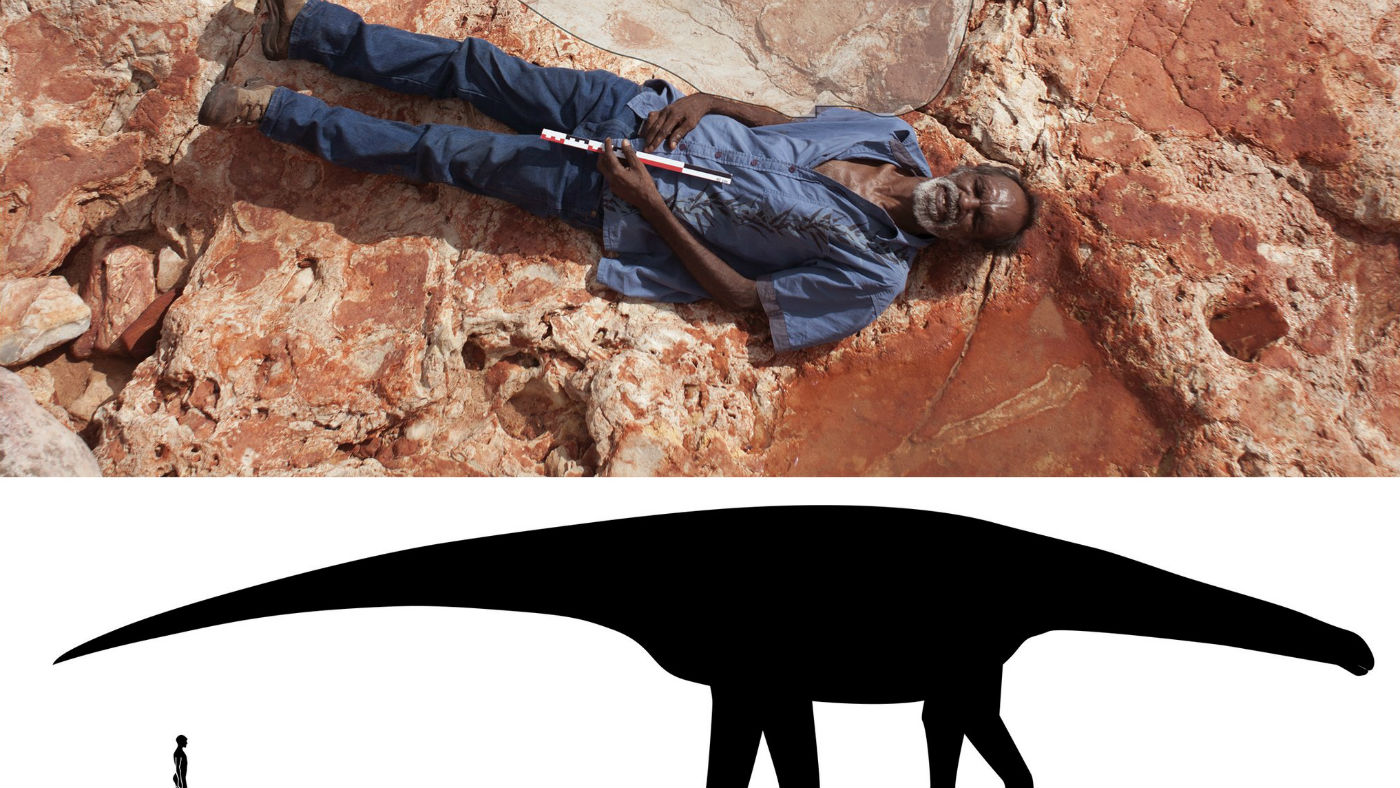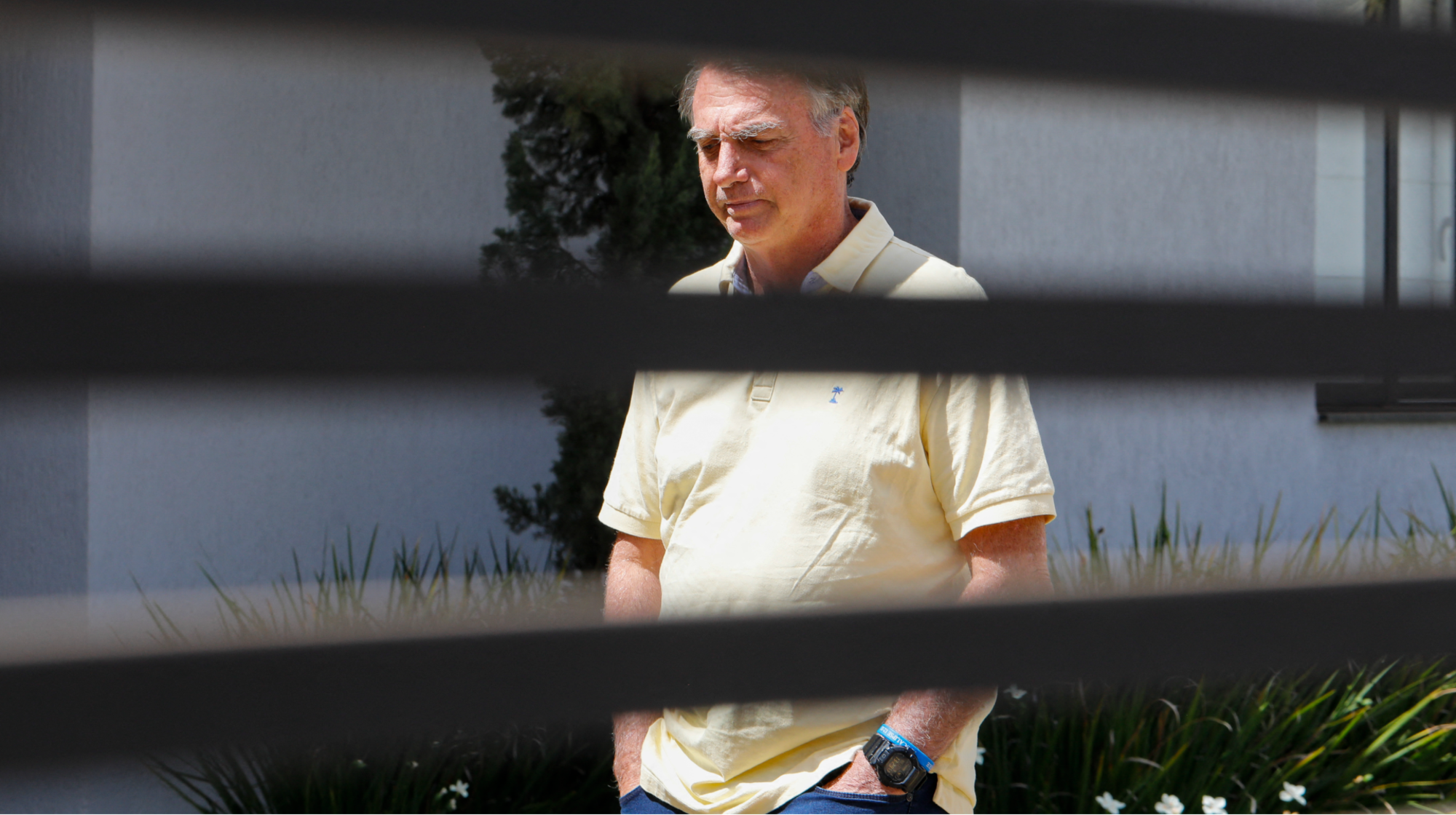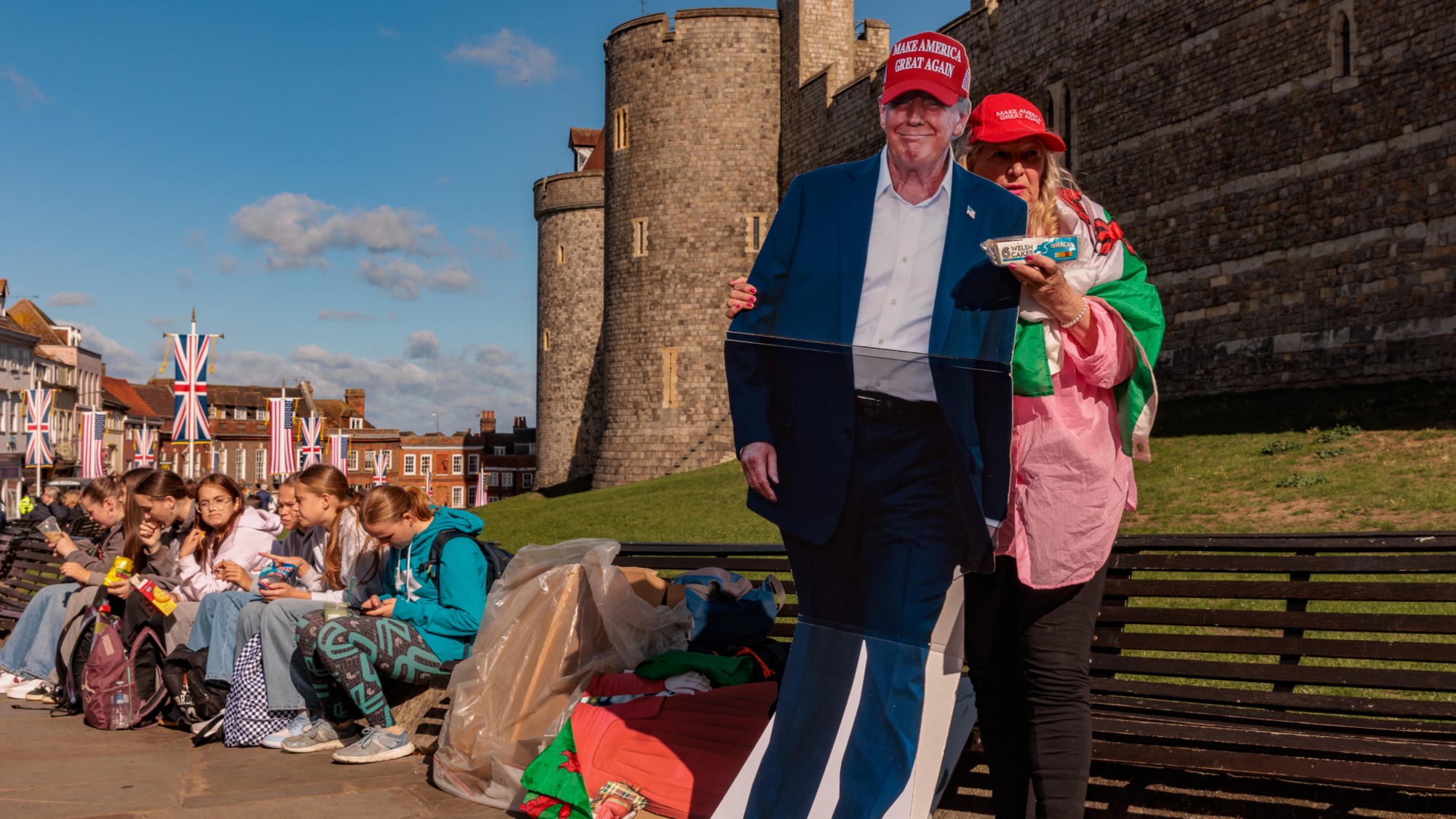World's biggest dinosaur footprint found in 'Australia's Jurassic Park'
A team of palaeontologists discovered prints measuring a staggering 5ft 7in

Palaeontologists have discovered the world's biggest known dinosaur footprints along a remote stretch of coastline in the Kimberley region of Western Australia.
At least 21 different species have been found - so many that researchers have dubbed the area "Australia's Jurassic Park".
One of the tracks features footprints of a sauropod measuring 5ft 7ins, eclipsing the previous record of 3ft 6in, discovered in Mongolia.
The Week
Escape your echo chamber. Get the facts behind the news, plus analysis from multiple perspectives.

Sign up for The Week's Free Newsletters
From our morning news briefing to a weekly Good News Newsletter, get the best of The Week delivered directly to your inbox.
From our morning news briefing to a weekly Good News Newsletter, get the best of The Week delivered directly to your inbox.
Dr Steve Salisbury, who has studied the prints, says the animal that made them would have measured around 18ft from floor to hip.
Speaking to ABC News, he said a footprint that big might at first seem scientifically impossible and the sheer size of the prints had caused them to be overlooked at first.
"These animals did exist," he added. "They were out there and we're seeing evidence of them having existed in the Kimberley 130 million years ago based on these tracks."
The sauropod family, which includes the brontosaurus, lived around 130 million years ago at Walmadany in Kimberley, north of Broome. That makes them considerably older than the previously oldest-known dinosaur fossils in Australia, which are between 90 million and 115 million years old.
A free daily email with the biggest news stories of the day – and the best features from TheWeek.com
The soft ground the prints were made in has since hardened to form sandstone rock platforms on the coast.
-
 Australia weighs new gun laws after antisemitic attack
Australia weighs new gun laws after antisemitic attackSpeed Read A father and son opened fire on Jewish families at Sydney’s Bondi Beach, killing at least 15
-
 How Bulgaria’s government fell amid mass protests
How Bulgaria’s government fell amid mass protestsThe Explainer The country’s prime minister resigned as part of the fallout
-
 Femicide: Italy’s newest crime
Femicide: Italy’s newest crimeThe Explainer Landmark law to criminalise murder of a woman as an ‘act of hatred’ or ‘subjugation’ but critics say Italy is still deeply patriarchal
-
 Brazil’s Bolsonaro behind bars after appeals run out
Brazil’s Bolsonaro behind bars after appeals run outSpeed Read He will serve 27 years in prison
-
 Americans traveling abroad face renewed criticism in the Trump era
Americans traveling abroad face renewed criticism in the Trump eraThe Explainer Some of Trump’s behavior has Americans being questioned
-
 Nigeria confused by Trump invasion threat
Nigeria confused by Trump invasion threatSpeed Read Trump has claimed the country is persecuting Christians
-
 Sanae Takaichi: Japan’s Iron Lady set to be the country’s first woman prime minister
Sanae Takaichi: Japan’s Iron Lady set to be the country’s first woman prime ministerIn the Spotlight Takaichi is a member of Japan’s conservative, nationalist Liberal Democratic Party
-
 Russia is ‘helping China’ prepare for an invasion of Taiwan
Russia is ‘helping China’ prepare for an invasion of TaiwanIn the Spotlight Russia is reportedly allowing China access to military training

